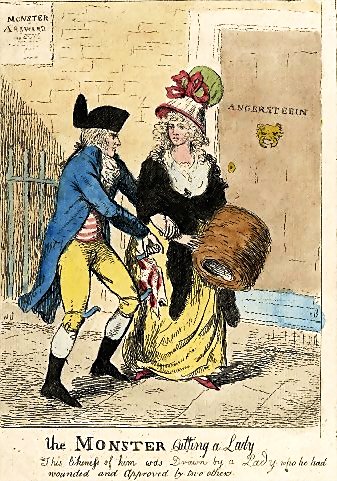
London, 1788. A fiend terrorized the city with his series of crimes. The “London Monster,” as the city dubbed him, didn’t kill, rape, or ignite.
He slashed.

Karen Lee Street has just launched a novel about the London Monster. She joins us today to talk about the true crime history on which she based her story.
Karen is a writer with extensive international experience in feature film script development. She has taught screenwriting at universities and professional training programs throughout Europe. Although born in Philadelphia and now in Australia, Karen has lived in London most of her adult life.
Edgar Allan Poe and the London Monster is the first novel in her mystery trilogy. A summary of her novel follows at the end of the post.
Ann Marie: The London Monster was a serial criminal, but not a murderer or rapist. What did he do?
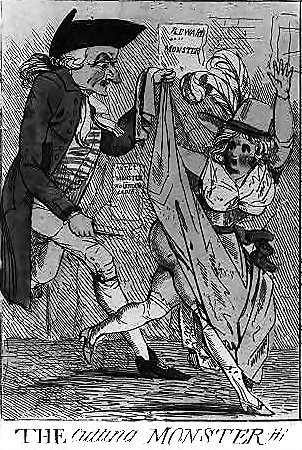
Karen: From 1788 – 1790, over fifty women in London complained of being attacked by a man who was dubbed ‘the Monster’. His victims were primarily attractive young women of comfortable means (with nice clothing) who were slashed across the buttocks with a sharp blade that ruined their skirts and often cut into their flesh. The victims also complained that the Monster abused them verbally. The crimes caused mass hysteria and satirical cartoonists of the day drew images of ladies wearing copper pots to protect their posteriors. It is important to note that in 1790 it was a felony to maliciously cut or deface a piece of clothing while it was worn by another person, a crime that could be punished by hanging or transportation.
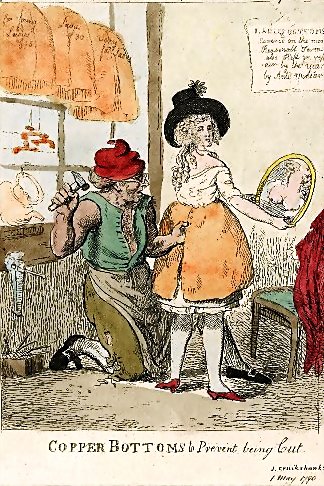
Were the London Monster’s crimes unique?
The Monster’s assaults could be labeled piquerism, which is defined as deriving sexual arousal from piercing another person’s body, most often the buttocks, with sharp objects, sometimes to the point of causing death. It is not a terribly common crime and many recorded cases are more brutal and gruesome than the Monster’s exploits. While the nature and number of the attacks suggest that the perpetrator (or perpetrators) might have been a piquerist, the descriptions of the attacks by his victims do not come across as sadistic or murderous, but rather as if he (or she?) were ridiculing the victims. In writing the novel, I had to play profiler and consider what the motive might be. An uncontrollable compulsion — a paraphilia — such as piquerism did not interest me as a motive for my perpetrator. I wished to explore a pre-meditated act driven by emotions that are easier to identify with such as jealousy and the desire for revenge.
How many victims were there?
Over fifty women claimed to have been attacked by the London Monster. Some of these claims did not fit the perpetrator’s modus operandi, however. For example, one woman was scratched on the nose by a pin when she (at invitation) leaned to smell an artificial nosegay. As it had been noted in the press that the Monster’s victims were attractive and these ladies gained a great deal of attention, some false claims were made. For example, Lady Eglantine Wallace stated that she had been accosted by the Monster, but later in court airily admitted that her story was a fabrication, one of her little jokes.
Did London even have a police force in 1788?
The Metropolitan Police was not established until 1829 and up until 1749 law enforcement was conducted by private citizens; thief-takers who pursued wrong-doers for a fee; and night watchmen who were often elderly or recruited from the workhouses. Corruption was a problem and the system was not considered very effective. In 1749, magistrate (and author) Henry Fielding founded the first unofficial British police force: the Bow Street Runners, who were connected to Bow Street Magistrates’ Office in Covent Garden where a group of magistrates headed criminal investigations. The Runners served writs and arrested individuals under the instruction and authority of the magistrates, and they were paid with government funds. The Bow Street Runners did not have a specific uniform, but were permitted to carry a truncheon with a crest to show their authority.
How did they try to catch the Monster?
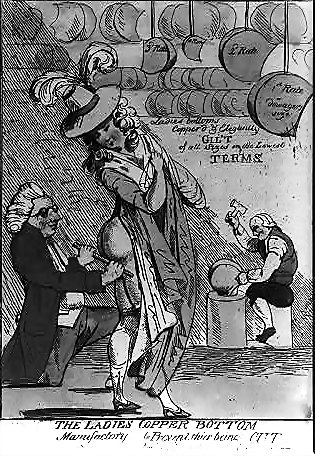
Victims made formal complaints of being attacked to the Magistrate’s Office — magistrate Sir Sampson Wright was in charge of the London Monster investigation. The Bow Street Runners were given descriptions of the victims’ attacker, but unfortunately these descriptions varied a great deal, which did not make it easy to round up suspects. The Monster’s activities accelerated after the Queen’s birthday ball on 18 January 1790 when six women were accosted and newspapers published incendiary accounts of these attacks. The wealthy John Julius Angerstein became very interested in the Monster’s victims and personally interviewed these ladies, writing down their testimonies and summing up their appearances. Angerstein gathered donations from various gentlemen and advertised a reward of fifty pounds for the capture and an additional fifty pounds for the conviction of the Monster. Posters were put up around London on 29 April 1790 regarding this reward and describing the Monster as about thirty years of age, average in height, rather thin, pock-marked with a large nose and light brown hair. The notice also instructed servants to take notice if they discovered blood on a man’s clothing and cutlers to watch for any man asking to have a weapon sharpened. On 7 May 1790, Angerstein distributed a second poster that noted two culprits might be at work and gave a description of the Monster’s clothing during his various attacks. Vigilantes were formed to patrol the streets at night and one such group wore ‘No Monster’ badges to make it clear to ladies that they were protectors rather than perpetrators; none of these groups were successful in stopping the attacks or capturing the Monster.
One man was convicted and jailed, but you think he was innocent. Why?
First, the descriptions of the London Monster given by his victims varied so wildly. Some journalists posited that there might be two attackers at work or possibly an actor with a facility for disguise. On 13 June 1790, Anne Porter, one of the Monster’s victims, claimed that she saw her attacker and her fiancé, John Coleman, chased after him and persuaded the man she accused to accompany him to the Bow Street offices. The accused did not match the initial description Miss Porter had given of her attacker, but she stuck to her claim and her fiancé Mr. Coleman collected the one hundred pound reward. She married him in April 1791.
The accused had two trials, both of which were farcical, with seemingly little attempt to operate under the supposition of ‘innocent until proven guilty’. The first trial on 8 July 1790 failed to present substantial evidence regarding the accused’s guilt, such as a weapon on his person or at his lodgings, and he was not identified without doubt by most of the victims. Indeed, those who thought him to be the wrong man were not called to testify. His moral character was criticized on the basis of his impoverished living circumstances and for generally being considered a pest by attractive ladies who had suffered his verbal ‘compliments’ in the past. When the accused took the stand, he was roundly hissed by the audience as were his character witnesses and those providing alibis. The jury found the accused guilty, but his sentence was deferred until the opinion of the twelve judges was heard; he was imprisoned in Newgate.
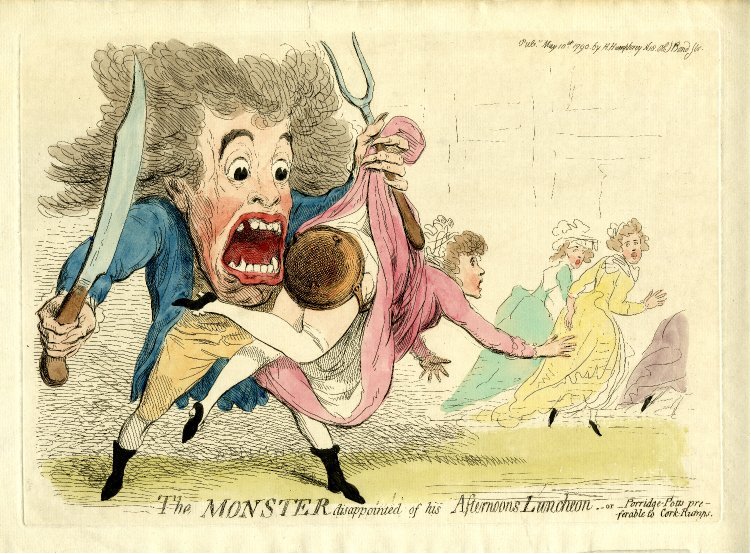
Soon after, Theophilus Swift published a pamphlet The Monster at Large that claimed the accused was innocent and his accusers had been lying. On 10 November 1790, the judges met to discuss whether the accused had committed the felony of willfully cutting clothing; it was decided that his offence did not fall into that arena and a retrial was granted for the misdemeanor of willfully and maliciously cutting a person. At the second trial on 13 December 1790, Theophilus Swift conducted the defense. Unfortunately, this ‘defense’ was highly eccentric and did little to truly assist the accused. He was convicted again and imprisoned for six years in Newgate.
One fictional aspect of your novel is the inclusion of Edgar Allan Poe. What role does he play?
Poe plays sleuth, along with his fictional character the great ratiocinator C. Auguste Dupin, thus adding the element of alternative history. Poe’s grandparents had been actors on the London stage during the Monster’s reign and his grandmother immigrated to America not long before the accused’s release from Newgate. In my story, Poe is sent a collection of letters, allegedly written by his grandparents; these letters suggest they were the true perpetrators of the Monster’s attacks. As the story begins, Poe’s goal is to prove the letters forgeries. He cannot bear the idea that he might come from ‘bad blood’.
Why did you think of using Poe as a character?
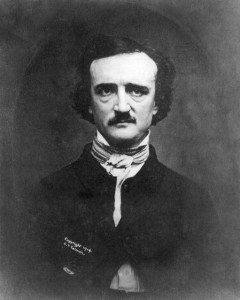
I knew that I wanted to do something with the story of the London Monster as the trial scenes in particular had captured my imagination. I was given a collection of Poe’s stories with an introduction that noted that his grandparents were actors in London and that Poe had lived in London for a time as a child. For some reason that stayed with me. I don’t remember the a-ha moment of thinking to use Poe, although I do remember being delighted to discover that the dates worked. I liked the idea of Poe as an investigator who would need to call on the highly objective ur-detective Dupin to help him with his family mystery as Poe could not conquer his emotions. I felt that Poe’s personal history made his reactions to his strange (fictional) inheritance plausible. Poe was orphaned before he turned three and he and his two siblings were sent to different foster families. He expressed great pride in his mother’s career as an actress and I felt that pride would extend to his grandmother who was also a very talented actress. Finding out that she was a criminal would be quite a blow.
Thank you, Karen, for your insights into such an unusual chapter of London’s history.
Here’s the scoop on Karen’s book:
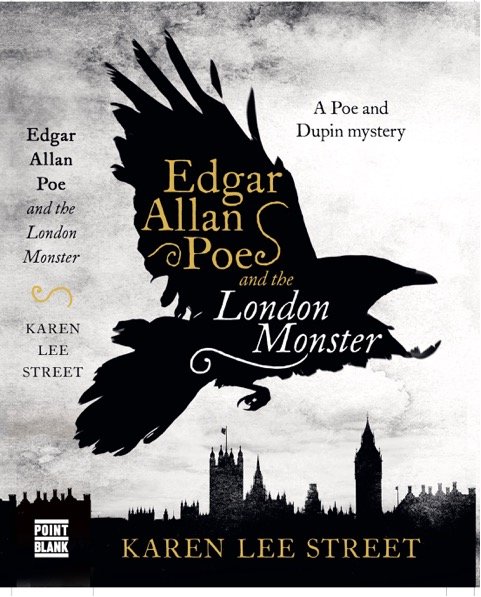
SUMMARY:
Summer, 1840. Edgar Allan Poe sails from Philadelphia to London to meet his friend C. Auguste Dupin, in the hope that the great detective will help him solve a family mystery. For Poe inherited a mahogany box containing a collection of letters allegedly written by his grandparents, actors who struggled to make a living on the London stage. The mysterious letters suggest that the couple played a more clandestine role as the ‘London Monster’— stalking well-to-do young women at night on the city’s streets, to slice their clothing and derrières.
Poe hopes to prove the missives forgeries; Dupin wonders if they are real, but their content is fantasy. Soon Poe is being stalked by someone who knows far more about his grandparents and their crimes than he does. And then he remembers disturbing attacks made upon him as a child in London … Could the perpetrators be connected?


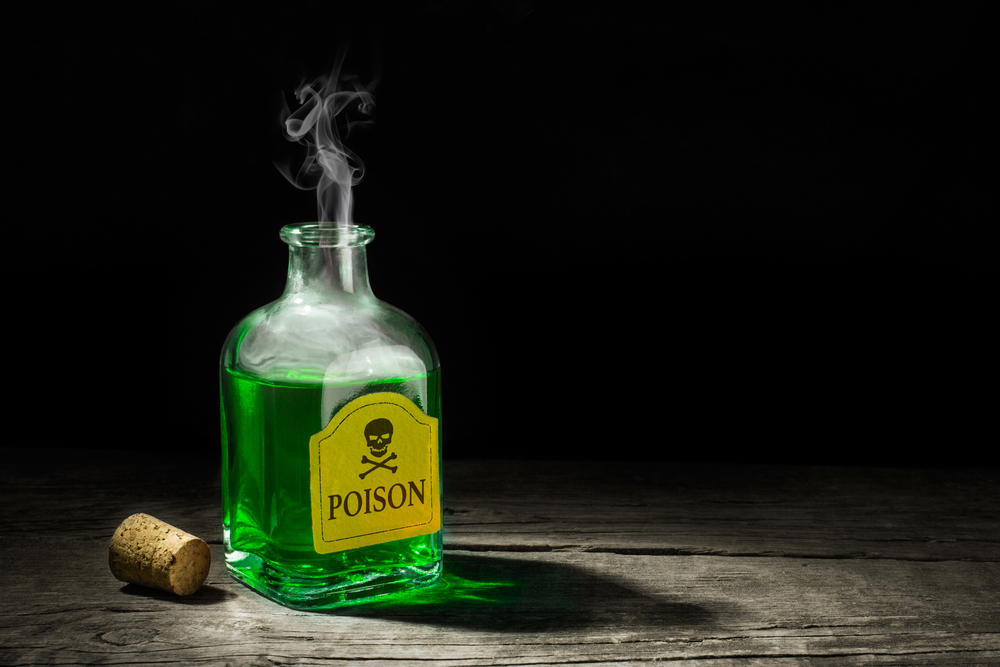

I am interested in reading the book but can’t help but feel Poe’s inclusion as a bit of a stretch. We’ll just have to see (after the reading). The other thing that I’m dubious about is “The Monster” being compared to Jack the Ripper since one of their crimes was a series of horrible bloody murders while the other was a series of “willfully cutting clothing”. Apples and oranges (both of which can also be cut with a knife). I LOVE period pieces though and I adore Poe so I’ll certainly be keeping an eye out for the book. Thank you for this interesting bit of macabre history.
You’re welcome, George, and thanks for commenting. It was me, and not Karen, who made the Ripper comparison, so I’m to blame for that. Yes, the Ripper’s crimes were much worse, but the Ripper wasn’t London’s first experience with a serial criminal. That’s what I meant to convey.
Hello George,
Throwing in my two cents with Ann Marie’s permission. Glad you are interested to read the book and thanks for your well-considered comments. You are right that the inclusion of Poe, and of course Dupin, is a bit of a stretch — a slight nod to “The Great Balloon Hoax” and Poe’s own fabricated tales of adventures in Europe as an adult. Having said that, the culprits I (playfully) suggest as the true Monster are probably as plausible as the notion that the accused attacked all (any?) of the Monster’s victims. The Monster’s crimes appealed to me because they weren’t gory like the Ripper’s and revenge is the primary motive in this story rather than a paraphilia. I hope Poe fans will enjoy the Poe references embedded in the mystery investigation as of course I am a fan myself.
[…] casebooks as an example of piquerism, the perverse sexual urge to penetrate the skin of others. The London Monster, who attacked women between 1788 and 1790, is another example of a […]
[…] of van Gogh cutting off his ear. That was in 1888. Was the criminal they were arguing about the London Monster? He was active from 1888 to […]